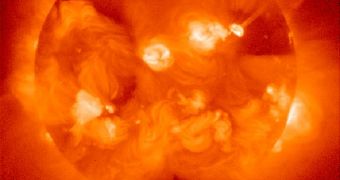Over the past few years, astronomers have observed some fairly peculiar occurrences in the distance covered by the astronomical unit (AU), the length that separates the Sun from the Earth. This unit of measurement is used a lot in astronomy, mostly because scientists know it's a constant. However, recent observations seem to point at something peculiar, namely the fact that the AU appears to be getting bigger. While no one knows precisely why this happens, a lot of experts are saying that this may have something to do with the Sun collecting more and more dark matter around it, as it's traveling through the Local Fluff, inside the Milky Way.
The AU is equal to the Earth's semimajor axis, and any changes in its value hint at modifications in this axis as well. Measurements conducted on numerous occasions by several researches have evidenced the fact that, for the past five years, this distance has been increasing by about 15 centimeters per year, give or take three centimeters. A team of Italian physicists from the National Institute of Nuclear Physics in Pisa, led by expert Lorenzo Iorio, believes that dark matter could be to blame for this weird phenomenon. Though dark matter cannot be measured directly just yet, it is believed to permeate the Universe, and to exert its largest influence via its gravitational pull on ordinary matter.
According to estimates, about 10^-25 grams of dark matter exist in each cubic centimeter of the Milky Way. The same studies show that this density is most likely larger around the most massive bodies, such as black holes and stars. It would then stand to reason, the Italian researchers say, that the Sun also accumulates increasingly large amounts of dark matter in the invisible halo around it. Physicists have even managed to calculate the total density of the stuff around our parent star, and say it reaches the 10^-19 g/cm^3 value, Technology Review reports.
Iorio believes that accumulations of dark matter have the ability to alter the course and orbits of planets around stars. In the specific case of elliptical orbits, such as the one the Earth revolves around the Sun on, the dark matter halo triggers a chain of events after which “the osculating semimajor axis of a gradually shrinking trajectory around a mass-increasing central body gets larger.” His calculations with this knowledge resulted in an increase of about seven centimeters per year, give or take five centimeters. These values are very close to the ones registered directly, so there may be some merit behind this line of thought.

 14 DAY TRIAL //
14 DAY TRIAL //